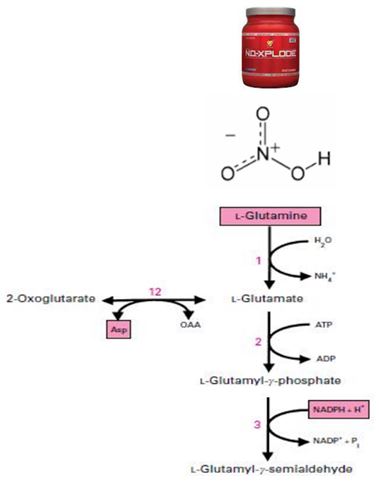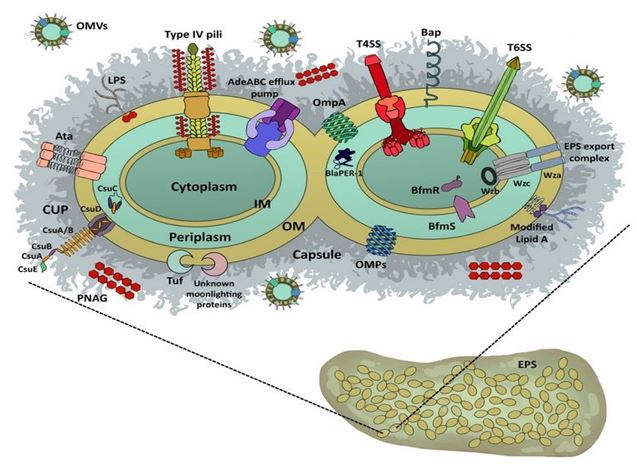Review Article
Phytochemistry and Biosynthesis
Ali Salehi-Sardoei; Halimeh Khalili
Abstract
Nitrogen monoxide or nitric oxide is a biological active growth regulator that a wide range of studies have recently shown that it acts as a growth regulator (signaling molecule) in plants. As soon as Nitric Oxide (NO) known as a new biological agent in plants and animals, biological branches of sciences ...
Read More
Nitrogen monoxide or nitric oxide is a biological active growth regulator that a wide range of studies have recently shown that it acts as a growth regulator (signaling molecule) in plants. As soon as Nitric Oxide (NO) known as a new biological agent in plants and animals, biological branches of sciences like medicine, biochemistry, physiology and genetics have paid special attention to it. NO is a very reactive gas shape free radical which has attracted much attention during recent years. This compound is produced by the plant and it has increased the shelf life of some fruits, vegetables and cut flowers in low concentrations. NO is mostly synthesized from enzymatic and non-enzymatic pathways whose enzymatic biosynthesis pathway is done by reductase nitrate biosynthesis pathway through the cytosol, also it is known as an important and very reactive signaling molecule with short life which is produced by a group of enzymes known as synthesize NO which transforms L-arginine to L-citrulline and NO. It has been revealed that plants use NO as a growth regulator which regulates and modifies antimicrobial defensive responses. Recently, it has been approved that this material plays a vital role in regulating the normal physiological activities of plants such as pores closing, aging, increasing the vase life of cut flowers after harvesting, respiration and photosynthesis, antioxidant enzymes activities and growth.

Review Article
Nano-Biotechnology
Mehran Alavi; Mahendra Rai; Fleming Martinez; Danial Kahrizi; Haroon Khan; Irwin Rose Alencar de Menezes; Henrique Douglas Melo Coutinho; José Galberto Martins Costa
Abstract
The applications of nanoparticles in various practical fields, owing to their unique properties compared with bulk materials, have been occupying the minds of scientists for several decades. In this regard, a combination of pharmacology and nanotechnology has contributed to producing newer effective ...
Read More
The applications of nanoparticles in various practical fields, owing to their unique properties compared with bulk materials, have been occupying the minds of scientists for several decades. In this regard, a combination of pharmacology and nanotechnology has contributed to producing newer effective anticancer and antimicrobial agents to inactivate resistant cancer cells and microorganisms, specifically multidrug-resistant ones. The physicochemical properties of nanoparticles based on metalloid, metal, and metal oxides such as selenium, silver, gold, titanium dioxide, zinc oxide, copper oxide, platinum, and magnesium oxide, have been well known and referred to as anticancer and antimicrobial agents or carriers. The inactivation and eradication of Gram-positive and Gram-negative bacteria may be mainly resulted from the oxidative damages in the bacterial medium. Overall, metalloid, metal and metal oxide NPs can be functionalized by other antibacterial or anticancer agents and biocompatible stabilizers to increase their efficiency in physiological conditions. However, the undesirable cytotoxicity of these nanoparticles in physiological conditions is the major hindrance to their application in the pharmaceutical industry and therapeutics. Nevertheless, it is expected that these problems will be solved in the near future. Therefore, the main objective of this review is to report an overview of the recent signs of progress in increasing anticancer and antibacterial mechanisms of metal and metal-based nanoparticles.

Review Article
Genetic engineering
Hamid Ahani; Soroush Attaran
Abstract
Seabuckthorn has multiple-use properties. This review explores the medicinal applications of Hippophae rhamnoides in healing ailments. The plant is being used in different parts of the world for its nutritional and medicinal properties. Sea buckthorn-based preparations have been extensively exploited ...
Read More
Seabuckthorn has multiple-use properties. This review explores the medicinal applications of Hippophae rhamnoides in healing ailments. The plant is being used in different parts of the world for its nutritional and medicinal properties. Sea buckthorn-based preparations have been extensively exploited in folklore treatment of slow digestion, stomach malfunctioning, cardiovascular problems, liver injury, tendon and ligament injuries, skin diseases and ulcers. In recent years, the medicinal and pharmacological activities of Seabuckthorn have been well investigated using limited clinical trials. Homeopathy is a well-respected modality to assist wellness. Traditional and modern medicinal experts have been applied this plant to treat various diseases. Seabuckthorn is an important plant because of its immense medicinal and therapeutic potential. However, several knowledge gaps identified in this paper would give impetus to new academic and R&D activities, especially for the development of Sea buckthorn-based herbal medicine and nutraceuticals. Its full application in dermatology may be attributed to the presence of a variety of flavonoids, vitamins, and unsaturated fatty acids. Great use of the plant in the traditional system for dermatological aspects, demands further comprehensive phytochemical work based on its actual use by the traditional population. Anti-inflammation is the most important applicable ingredient of this miracle berry.

Review Article
Cell structural and functions
Hamid kheyrodin; Raheba Jami; Fazal Ur Rehman
Abstract
Plant cells are the basic unit of life in organisms of the kingdom Plantae. These organisms as eukaryotic cells have a true nucleus along with particular structures called organelles that perform various functions. The plant cell wall can provide a structural framework to support plant ...
Read More
Plant cells are the basic unit of life in organisms of the kingdom Plantae. These organisms as eukaryotic cells have a true nucleus along with particular structures called organelles that perform various functions. The plant cell wall can provide a structural framework to support plant growth and defense the cells against various viral and bacterial pathogens. The cell wall can retain flexibility, also when subjected to developmental, biotic, abiotic stimuli, and stresses it can be efficiently remodeled in response. Genes encoding enzymes are able to fabricate or hydrolyze substances of the plant cell wall exhibit differential expression when subjected to different stresses, suggesting they may facilitate stress tolerance such as heavy metals, dust accumulation, and salty medium through changes in cell composition wall. Bacteria are small single-celled organisms that get the nutrients they need from their environment. Sometimes, this environment can be your child or any other living thing. Bacteria are very small and cannot be seen under a microscope. Bacteria help the digestive system and prevent harmful bacteria from entering the human body as well as some other bacteria are also applied to produce drugs and vaccines. A cell wall as the non-living component can cover the outmost layer of a cell. According to the type of organism, the cell envelope has a different composition. The cell envelope separates the interior contents of the cell from the exterior environment. In addition, it provides shape, support, and protection to the cell and its organelles. However, this cellular component is present exclusively in eukaryotic plants, fungi, and a few prokaryotic organisms. Compounds found in plant cells are absent in animal cells, and DNA base sequences reflect this. Moreover, plant DNA is often larger than animal DNA. In this mini-review, we concluded that the differences between plant and animal DNA defendant on the sequence of bases in the helix.

Original Article
Gene Expression Studies
Ismail Muhammad; Pukuma Micah Sale; Muhammad Khadija Salisu; Tanko Mahmoud Muhammad; Bala Abubakar; Augustine Linda Maidala; Enock Nuwanyada
Abstract
Chloroquine was one of the most cheapest and effective chemotherapeutic drugs for Plasmodium falciparum-malaria, but for a long, the drug has been officially withdrawn in almost all malaria-endemic countries including Nigeria, due to the development of resistance by the parasite. Withdrawal of the drug ...
Read More
Chloroquine was one of the most cheapest and effective chemotherapeutic drugs for Plasmodium falciparum-malaria, but for a long, the drug has been officially withdrawn in almost all malaria-endemic countries including Nigeria, due to the development of resistance by the parasite. Withdrawal of the drug may make the drug regains its efficacy. Therefore, this study aimed to determine the presence of Biomarkers associated with chloroquine resistance from Gombe Local Government Area, Gombe State, Nigeria after its withdrawal in 2005. Twenty hundred blood samples were collected from consented study subjects and analysed using Microscopy, RDT and PCR. DNA was extracted using Quick-DNA™ Miniprep (No. D4069), Purity and Concentration of the DNA were determined using Nanodrop Spectrophotometer. 57 true positive samples were selected for molecular analysis. Nested PCR was used to amplify the required codon (C72S, M74I, K76T and N75E) position of PCRT the gene of P. falciparum. Both Primary and Secondary PCR was carried out. The PCR products were subjected to electrophoresis in 2% agarose and stained with ethidium bromide. The amplicons were purified and sequenced, after which the sequenced products were subjected to BLAST software. Single Nucleotide Polymorphism was recorded from C72S and K76T with a prevalence of 05(8.80%) and 46(80.70%) respectively. Confirmed biomarkers of Chloroquine resistance are still present in P. falciparum isolate from Gombe L.G.A.

Original Article
Medical
Razieh Behzadmehr; Khadije Rezaie-Keikhaie
Abstract
Diabetes is one of the most common non-contagious diseases in the world. This disease is the fourth or fifth cause of death in most developed countries. The relationship between tuberculosis and diabetes had been introduced years ago and diabetes is considered a threatening factor in tuberculosis in ...
Read More
Diabetes is one of the most common non-contagious diseases in the world. This disease is the fourth or fifth cause of death in most developed countries. The relationship between tuberculosis and diabetes had been introduced years ago and diabetes is considered a threatening factor in tuberculosis in the research history. Not only tuberculosis is prevalent among diabetic persons, but also diabetes can affect the appearance of imaging of tuberculosis. This is a kind of analytic study, a case-control study, which was carried out between the years 2014 and 2015 in Zabol City. In this study, the radiographic findings from the patients suffering from pulmonary tuberculosis in diabetic patients and not diabetic patients are compared. These radiographic were handed to a radiologist and the radiologic findings of these graphs from the anatomic location (upper and lower half of the right and left bellows), Presence or absence of cavities, nodules, density and pleural involvement were recorded and compared with the diabetic and non-diabetic group. After gathering of the data using SPSS software, descriptive statistics were presented in the form of (frequency, percent) graphs and a chi-square test (p<0.05) was used to analyze and comparing of the results of diabetic and un-diabetic patients. The population of the study consisted of Chest radiographs for 124 TB patients which 61 (49.19 %) were suffering from diabetics. In this study, 45 (71.43%) non-diabetic and 42 (65.85%) diabetic patients were women (p=0.7). There were 12 diabetic TB patients (19.67%) and 3 non-diabetic- TB patients (4.76%) with the consolidation of middle part of left lung (p=0.01) and 8 (13.11%) diabetic TB and 1 (1.59%) non-diabetic TB with reticulonodular infiltration of lower part of left lung (p=0.02). There was no significant difference in the rest of the radiographic results. The findings of this study indicate that reticulonodular infiltration and consolidation of lower &middle parts of the lung in TB diabetic patients is more than in TB non-diabetic patients and diabetes can affect the findings of pulmonary tuberculosis radiography.







